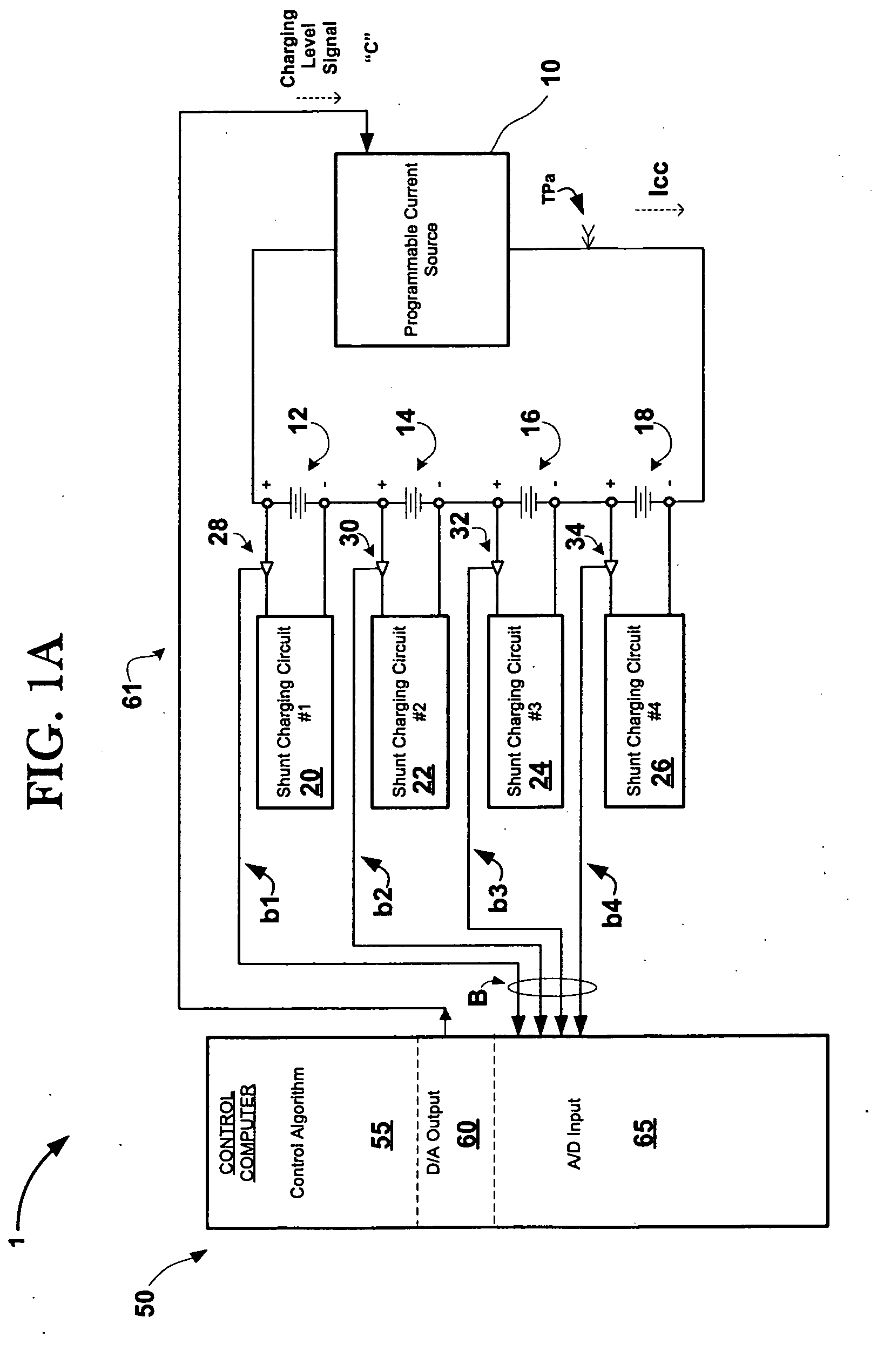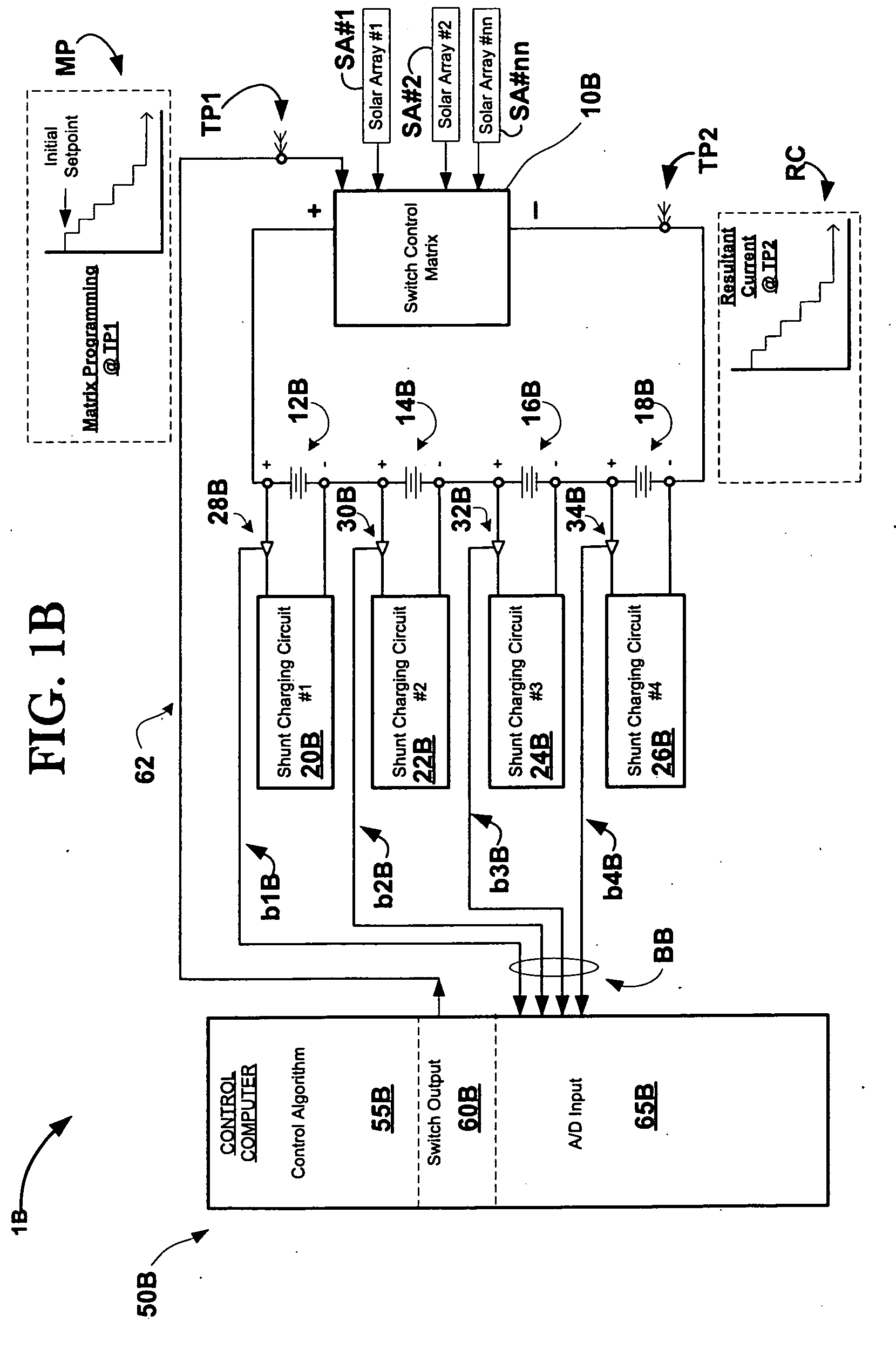Battery charger and power reduction system and method
a battery charger and power reduction technology, applied in the field of batteries chargers and power reduction systems and methods, can solve the problems of rapid chargers that may overcharge, inconvenient charging, and battery damage, and achieve the effects of reducing costs, effective charging batteries, and minimizing the amount of power needed
- Summary
- Abstract
- Description
- Claims
- Application Information
AI Technical Summary
Benefits of technology
Problems solved by technology
Method used
Image
Examples
Embodiment Construction
[0025] The devices, circuits, and / or other components described below preferably come from a group of devices, circuits, and / or other components that are well known and / or are commonly available to (or may be fabricated using commonly available knowledge, methods, and / or technology in) the field(s) of electronics or electrical equipment design, and / or to other related fields. And, while the use of these may be preferable, other means of implementing the present invention may also be used as well.
[0026] Referring now to FIG. 1A, a schematic block diagram of an embodiment of the present invention Battery Charger (BC) 1 is shown. As shown, a Programmable Current Source 10 is electrically connected across, and is representationally being used to charge four batteries, which have been removably inserted into battery charging slots 12, 14, 16 and 18. Each battery charging slot 12, 14, 16 and 18 is a part of an associated Shunt Charging Circuit, and, as shown, charging slot 12 is associat...
PUM
 Login to View More
Login to View More Abstract
Description
Claims
Application Information
 Login to View More
Login to View More - R&D
- Intellectual Property
- Life Sciences
- Materials
- Tech Scout
- Unparalleled Data Quality
- Higher Quality Content
- 60% Fewer Hallucinations
Browse by: Latest US Patents, China's latest patents, Technical Efficacy Thesaurus, Application Domain, Technology Topic, Popular Technical Reports.
© 2025 PatSnap. All rights reserved.Legal|Privacy policy|Modern Slavery Act Transparency Statement|Sitemap|About US| Contact US: help@patsnap.com



